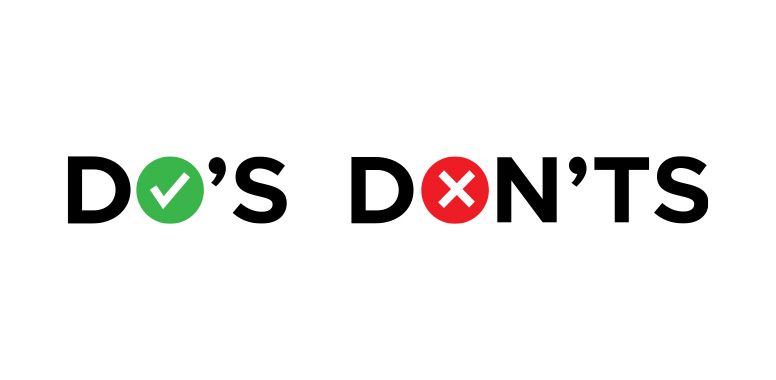Holiday Success on Amazon: How to Optimize Listings Without Breaking the Rules
The holiday season represents a golden opportunity for Amazon sellers, as it’s the time when shoppers flock to the platform in search of the perfect gifts, exclusive deals, and last-minute purchases. Events like Black Friday and Cyber Monday see a surge in online traffic, with millions of customers hunting for the best prices and most unique items. For sellers, this means a tremendous potential to boost sales and grow their customer base—if your listings are prepared to meet the demand.
To succeed in this competitive environment, simply listing your products isn’t enough. Your listings must stand out, catch the attention of holiday shoppers, and provide the information they need to make a purchase decision. This requires a combination of strategic optimization (such as using seasonal keywords, highlighting gift-worthy features, and showcasing appealing imagery) and attention to Amazon’s Terms of Service (TOS).
Failing to comply with Amazon’s guidelines can result in warnings, suppressed listings, or even account suspension—outcomes that no seller can afford during the busiest shopping season of the year. Striking the right balance between optimization and compliance is the key to ensuring that your listings remain visible, professional, and trustworthy.
In this guide, we’ll break down actionable steps you can take to prepare your listings for the holidays. From keyword strategies and festive imagery to highlighting features that make your product the perfect holiday gift, we’ll show you how to attract shoppers, boost conversions, and maximize holiday sales—all while staying within Amazon’s rules.
1. Use Seasonal Keywords Strategically
Keywords play a significant role in helping your products appear in search results, especially during the holiday season. While it’s tempting to include promotional phrases like “Black Friday Deals” or “Cyber Monday Specials” in your titles, Amazon explicitly prohibits time-sensitive language or sales terms in product titles.
TOS-Compliant Strategy:
- Use seasonal but descriptive keywords, such as “Holiday Gift” or “Christmas Present,” only if they genuinely describe the product’s purpose.
- Incorporate event-specific terms like “Black Friday” and “Cyber Monday” in your backend search terms to improve discoverability without violating visible content policies.
Example:
❌ Instead of: “Plush Blanket - Black Friday Steal - Cyber Monday Gift”
✅ Use: “Plush Blanket - Cozy Holiday Gift - Super Soft Throw”
2. Revamp Bullet Points with Gift-Focused Benefits
Amazon allows sellers to use bullet points to highlight product features and benefits. This is a great place to address holiday shoppers directly. Focus on why your product makes a great gift or is ideal for the holiday season.
TOS-Compliant Strategy:
- Highlight gifting features, such as “Comes in elegant packaging—ready to gift.”
- Use descriptive language to appeal to seasonal needs without overusing promotional language.
- Avoid claims that are not directly related to the product's features or benefits.
Example:
- ✅ Compliant: “Elegant design makes it a perfect gift for loved ones this holiday season.”
- ❌ Non-Compliant: “Best Black Friday deal you’ll find!”
3. Enhance Product Descriptions with Seasonal Appeal
The product description is your chance to tell a story about how your product fits into holiday celebrations. While promotional language is more acceptable here, it’s still important to focus on the product’s unique selling points rather than relying solely on sales terms.
TOS-Compliant Strategy:
- Emphasize how the product can be used during the holidays (e.g., “Create cozy winter nights with this plush throw blanket”).
- Use a warm, festive tone without making unverified claims or using exaggerated superlatives.
4. Use Festive Images and Videos
High-quality visuals can make your product more appealing to holiday shoppers. Amazon allows sellers to include lifestyle images, and this is a perfect opportunity to create a holiday ambiance.
TOS-Compliant Strategy:
- Use festive backgrounds, props, or settings, such as showing the product under a Christmas tree or wrapped as a gift.
- Ensure the images remain focused on the product and do not mislead customers.
Example:
- ✅ Compliant: A lifestyle photo showing a gift-wrapped product next to holiday decor.
- ❌ Non-Compliant: Overly edited images that obscure the actual product or exaggerate its features.
5. Leverage A+ Content for Holiday Storytelling
If your brand is eligible, A+ content is an excellent tool to highlight your product’s holiday appeal. Use it to create detailed visuals, comparison charts, and lifestyle imagery.
TOS-Compliant Strategy:
- Use festive banners, such as “Holiday Gift Guide,” without including pricing, promotional terms, or discounts.
- Ensure that the content remains focused on the product and its features.
6. Update Backend Keywords for Seasonal Traffic
Your backend search terms are invisible to customers but essential for ensuring your product appears in relevant searches. Amazon allows up to 250 characters for backend keywords, so use this space to add holiday-specific terms.
TOS-Compliant Strategy:
- Include keywords like “Christmas gift,” “stocking stuffer,” or “holiday decorations.”
- Avoid using competitor brand names or misleading terms.
7. Highlight Shipping and Delivery Options
Shoppers are often concerned about whether their gifts will arrive on time. Use your bullet points and descriptions to emphasize fast shipping options if applicable.
TOS-Compliant Strategy:
- Mention “Eligible for Prime Delivery” or “Fast Shipping” if accurate.
- Avoid making promises that are outside your control, such as specific delivery dates.
Example:
- ✅ Compliant: “Enjoy fast and reliable Prime delivery to ensure your gift arrives on time.”
- ❌ Non-Compliant: “Guaranteed delivery before Christmas!”
8. Run Promotions and Coupons Properly
Discounts and promotions can drive conversions during the holidays, but they must be set up using Amazon’s official tools to remain compliant.
TOS-Compliant Strategy:
- Use Amazon’s “Coupons” or “Lightning Deals” to offer discounts.
- Avoid mentioning specific discounts or promotional claims directly in the title, bullet points, or images.
Example:
- ✅ Compliant: Use Amazon’s promotion badge (e.g., “Save 20% with coupon”).
- ❌ Non-Compliant: “50% off Black Friday Special!” in the title or description.
9. Address Common Holiday Concerns in FAQs
The FAQ section is a great place to address specific holiday-related concerns, such as return policies or gift-wrapping options.
TOS-Compliant Strategy:
- Answer questions accurately and honestly, focusing on features like “hassle-free returns” or “available in gift packaging.”
10. Monitor Listings for Compliance
Finally, it’s essential to regularly review your listings for compliance. During the holidays, Amazon often increases its scrutiny of listings to ensure sellers are adhering to policies.
TOS-Compliant Strategy:
- Double-check that all claims are accurate and supported by evidence.
- Ensure your inventory is updated, and your listing does not include outdated or misleading information.
Optimizing your Amazon listings for the holidays is about balancing seasonal appeal with TOS compliance. By focusing on accurate, descriptive language, leveraging festive imagery, and emphasizing gifting features, you can attract holiday shoppers while staying within Amazon’s guidelines. These strategies not only help you drive sales but also ensure your listings maintain a professional and trustworthy reputation.
Start implementing these changes now to make the most of the holiday shopping season and create an outstanding shopping experience for your customers!


